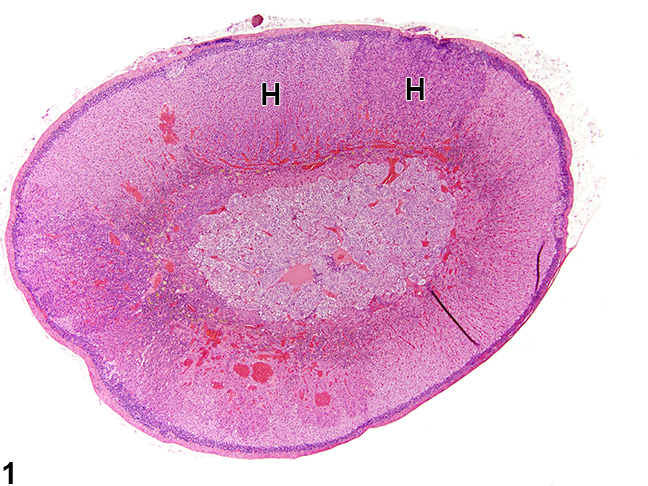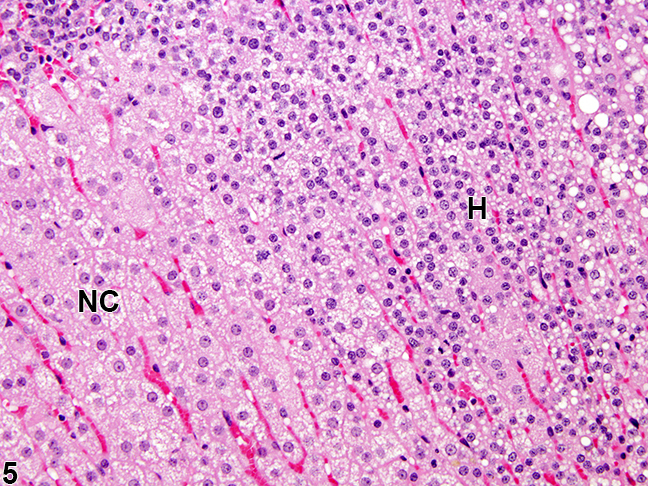17 alpha-hydroxylase deficiency pathophysiology: Difference between revisions
No edit summary |
Iqra Qamar (talk | contribs) |
||
| (45 intermediate revisions by 6 users not shown) | |||
| Line 1: | Line 1: | ||
__NOTOC__ | __NOTOC__ | ||
{{ | {{17 alpha-hydroxylase deficiency}} | ||
{{CMG}}; {{AE}} {{ | {{CMG}}; {{AE}} {{MJ}} | ||
==Overview== | ==Overview== | ||
17 alpha-hydroxylase deficiency is an uncommon form of [[congenital adrenal hyperplasia]] resulting from a defect in the [[gene]] [[CYP17A1]], which encodes for the [[enzyme]] 17 alpha-hydroxylase and 17,20-lyase. 17 alpha-hydroxylase deficiency is transmitted in an [[autosomal recessive]] pattern. [[Mineralocorticoid excess]] and lack of [[androgens]] are two main features in this disease. | |||
==Pathogenesis== | |||
* [[CYP17A1]] gene defects can cause two type of enzyme deficiencies: 17α-hydroxylase enzyme deficiency and 17,20-lyase deficiency. The dual activities mediate key transformations in [[cortisol]] and [[sex steroid]] synthesis: | |||
** 17α-hydroxylase mediates the pathway: [[pregnenolone]] → [[17-hydroxypregnenolone]], also [[progesterone]] → [[17-hydroxyprogesterone]]. | |||
** 17,20-lyase mediates pathway [[17-hydroxypregnenolone]] → [[DHEA|Dehydroepiandrosterone]], also [[17-hydroxyprogesterone]] → [[androstenedione]]. | |||
* [[Mineralocorticoid excess]] is the major clinical clue distinguishing the 17α-hydroxylase deficiency from the 17,20-lyase deficiency, which only affects the [[Sex (activity)|sex]] [[steroids]]. | |||
* In 17 alpha-hydroxylase deficiency, [[steroid biosynthesis]] will be limited to [[progesterone]], [[11-deoxycorticosterone]] ([[Deoxycorticosterone|DOC]]), and [[corticosterone]]. | |||
* [[11-deoxycorticosterone]] ([[Deoxycorticosterone|DOC)]] binds to the mineralocorticoid receptor and its excess amounts in 17 alpha-hydroxylase deficiency causes [[aldosterone]] effects such as volume expansion, [[hypertension]], and [[hypokalemia]]. Also, [[11-deoxycorticosterone]] ([[Deoxycorticosterone|DOC)]] effects will suppress [[renin]] and [[aldosterone]] production. | |||
* The most important features of 17 alpha-hydroxylase deficiency include [[hypertension]], [[hypokalemia]] and [[sexual infantilism]]. | |||
** [[Hypertension]] and [[hypokalemia]] result from accumulation of [[cortisol]] precursors, that have [[mineralocorticoid]] characteristics. | |||
** [[Sexual infantilism]] results from the inability of [[adrenal cortex]] to synthesize [[androgens]] and [[estrogens]].<ref name="pmid8070426">{{cite journal |vauthors=Kater CE, Biglieri EG |title=Disorders of steroid 17 alpha-hydroxylase deficiency |journal=Endocrinol. Metab. Clin. North Am. |volume=23 |issue=2 |pages=341–57 |year=1994 |pmid=8070426 |doi= |url=}}</ref><ref name="pmid999330">{{cite journal |vauthors=Heremans GF, Moolenaar AJ, van Gelderen HH |title=Female phenotype in a male child due to 17-alpha-hydroxylase deficiency |journal=Arch. Dis. Child. |volume=51 |issue=9 |pages=721–3 |year=1976 |pmid=999330 |pmc=1546244 |doi= |url=}}</ref><ref name="pmid9452426">{{cite journal |vauthors=Auchus RJ, Lee TC, Miller WL |title=Cytochrome b5 augments the 17,20-lyase activity of human P450c17 without direct electron transfer |journal=J. Biol. Chem. |volume=273 |issue=6 |pages=3158–65 |year=1998 |pmid=9452426 |doi= |url=}}</ref><ref name="pmid6332824">{{cite journal |vauthors=Griffing GT, Wilson TE, Holbrook MM, Dale SL, Jackson TK, Ullrich I, Melby JC |title=Plasma and urinary 19-nor-deoxycorticosterone in 17 alpha-hydroxylase deficiency syndrome |journal=J. Clin. Endocrinol. Metab. |volume=59 |issue=5 |pages=1011–5 |year=1984 |pmid=6332824 |doi=10.1210/jcem-59-5-1011 |url=}}</ref><ref name="pmid15866602">{{cite journal |vauthors=Simsek E, Ozdemir I, Lin L, Achermann JC |title=Isolated 17,20-lyase (desmolase) deficiency in a 46,XX female presenting with delayed puberty |journal=Fertil. Steril. |volume=83 |issue=5 |pages=1548–51 |year=2005 |pmid=15866602 |doi=10.1016/j.fertnstert.2004.11.063 |url=}}</ref> | |||
[[image:17 hydroxylase.gif|center|frame|800px|Adrenal steroid synthesis pathways in adrenal cortex and related enzymes <ref name="urlFile:Adrenal Steroids Pathways.svg - Wikimedia Commons">{{cite web |url=https://commons.wikimedia.org/wiki/File:Adrenal_Steroids_Pathways.svg|title=File:Adrenal Steroids Pathways.svg - Wikimedia Commons |format= |work= |accessdate=}}</ref>]] | |||
==Genetics== | ==Genetics== | ||
* | * 17 alpha-hydroxylase deficiency is an [[inherited]] disease with an [[autosomal recessive]] pattern, which means both copies of the [[gene]] in each [[cell]] have [[gene]] [[mutations]]. | ||
* Commonly, the parents of an individual with an [[autosomal recessive]] condition each carry one copy of the mutated [[gene]], but they typically do not show signs and symptoms of the condition.<ref name="pmid28476231">{{cite journal |vauthors=Hannah-Shmouni F, Chen W, Merke DP |title=Genetics of Congenital Adrenal Hyperplasia |journal=Endocrinol. Metab. Clin. North Am. |volume=46 |issue=2 |pages=435–458 |year=2017 |pmid=28476231 |doi=10.1016/j.ecl.2017.01.008 |url=}}</ref> | |||
==Associated Conditions== | ==Associated Conditions== | ||
* [[Ambiguous genitalia]] | |||
* [[Hypertension]] | |||
==Gross Pathology== | ==Gross Pathology== | ||
[[Gross pathology]] findings in patients with 17 alpha-hydroxylase deficiency are:<ref name="radio">Congenital adrenal hyperplasia. Dr Henry Knipe and Dr M Venkatesh . Radiopaedia.org 2015.http://radiopaedia.org/articles/congenital-adrenal-hyperplasia</ref><ref name="pmid25372578">{{cite journal |vauthors=Teixeira SR, Elias PC, Andrade MT, Melo AF, Elias Junior J |title=The role of imaging in congenital adrenal hyperplasia |journal=Arq Bras Endocrinol Metabol |volume=58 |issue=7 |pages=701–8 |year=2014 |pmid=25372578 |doi= |url=}}</ref> | |||
*Enlarged [[adrenal glands]] | |||
*Wrinkled surface [[adrenal glands]] | |||
*Cerebriform pattern [[adrenal glands]] ([[pathognomonic]] sign) | |||
*Normal [[ultrasound]] appearances may also be seen | |||
*[[Testicular]] masses may be identified representing [[adrenal]] rest tissue | |||
[[Image:Cah.jpg|center|thumb|400px|frame|Adrenal gland, Cortex - Hyperplasia in a male rat from a chronic study. There are two adjacent foci of hyperplasia (H) in the zona fasciculata.<ref name="urlAdrenal Gland - Hyperplasia - Nonneoplastic Lesion Atlas">{{cite web |url=https://ntp.niehs.nih.gov/nnl/endocrine/adrenal/hyperpl/index.htm |title=Adrenal Gland - Hyperplasia - Nonneoplastic Lesion Atlas |format= |work= |accessdate=}}</ref>]] | |||
==Microscopic Pathology== | ==Microscopic Pathology== | ||
In 17 alpha-hydroxylase deficiency [[microscopic]] findings may include: | |||
* Diffuse cortical [[hyperplasia]] with smaller [[cells]] | |||
* The cell [[cytoplasm]] can be vacuolated, and often more [[basophilic]] | |||
* Rare [[mitotic]] figures may be present | |||
* The [[hyperplastic]] cells typically lack features of cellular [[atypia]]<ref name="urlAdrenal Gland - Hyperplasia - Nonneoplastic Lesion Atlas">{{cite web |url=https://ntp.niehs.nih.gov/nnl/endocrine/adrenal/hyperpl/index.htm |title=Adrenal Gland - Hyperplasia - Nonneoplastic Lesion Atlas |format= |work= |accessdate=}}</ref> | |||
[[Image:Cah mic.jpg|thumb|center|400px|frame|Adrenal gland, Cortex - Hyperplasia in a female rat from a chronic study. There is a hyperplastic lesion (H) in which cortical cells are increased in number but are smaller in size than adjacent normal cortical cells (NC)<ref name="urlAdrenal Gland - Hyperplasia - Nonneoplastic Lesion Atlas">{{cite web |url=https://ntp.niehs.nih.gov/nnl/endocrine/adrenal/hyperpl/index.htm |title=Adrenal Gland - Hyperplasia - Nonneoplastic Lesion Atlas |format= |work= |accessdate=}}</ref>]] | |||
==References== | ==References== | ||
{{Reflist|2}} | {{Reflist|2}} | ||
Latest revision as of 16:04, 20 October 2017
|
17 alpha-hydroxylase deficiency Microchapters |
|
Differentiating 17 alpha-hydroxylase deficiency from other Diseases |
|
Diagnosis |
|
Treatment |
|
Case Studies |
|
17 alpha-hydroxylase deficiency pathophysiology On the Web |
|
American Roentgen Ray Society Images of 17 alpha-hydroxylase deficiency pathophysiology |
|
Risk calculators and risk factors for 17 alpha-hydroxylase deficiency pathophysiology |
Editor-In-Chief: C. Michael Gibson, M.S., M.D. [1]; Associate Editor(s)-in-Chief: Mehrian Jafarizade, M.D [2]
Overview
17 alpha-hydroxylase deficiency is an uncommon form of congenital adrenal hyperplasia resulting from a defect in the gene CYP17A1, which encodes for the enzyme 17 alpha-hydroxylase and 17,20-lyase. 17 alpha-hydroxylase deficiency is transmitted in an autosomal recessive pattern. Mineralocorticoid excess and lack of androgens are two main features in this disease.
Pathogenesis
- CYP17A1 gene defects can cause two type of enzyme deficiencies: 17α-hydroxylase enzyme deficiency and 17,20-lyase deficiency. The dual activities mediate key transformations in cortisol and sex steroid synthesis:
- 17α-hydroxylase mediates the pathway: pregnenolone → 17-hydroxypregnenolone, also progesterone → 17-hydroxyprogesterone.
- 17,20-lyase mediates pathway 17-hydroxypregnenolone → Dehydroepiandrosterone, also 17-hydroxyprogesterone → androstenedione.
- Mineralocorticoid excess is the major clinical clue distinguishing the 17α-hydroxylase deficiency from the 17,20-lyase deficiency, which only affects the sex steroids.
- In 17 alpha-hydroxylase deficiency, steroid biosynthesis will be limited to progesterone, 11-deoxycorticosterone (DOC), and corticosterone.
- 11-deoxycorticosterone (DOC) binds to the mineralocorticoid receptor and its excess amounts in 17 alpha-hydroxylase deficiency causes aldosterone effects such as volume expansion, hypertension, and hypokalemia. Also, 11-deoxycorticosterone (DOC) effects will suppress renin and aldosterone production.
- The most important features of 17 alpha-hydroxylase deficiency include hypertension, hypokalemia and sexual infantilism.
- Hypertension and hypokalemia result from accumulation of cortisol precursors, that have mineralocorticoid characteristics.
- Sexual infantilism results from the inability of adrenal cortex to synthesize androgens and estrogens.[1][2][3][4][5]

Genetics
- 17 alpha-hydroxylase deficiency is an inherited disease with an autosomal recessive pattern, which means both copies of the gene in each cell have gene mutations.
- Commonly, the parents of an individual with an autosomal recessive condition each carry one copy of the mutated gene, but they typically do not show signs and symptoms of the condition.[7]
Associated Conditions
Gross Pathology
Gross pathology findings in patients with 17 alpha-hydroxylase deficiency are:[8][9]
- Enlarged adrenal glands
- Wrinkled surface adrenal glands
- Cerebriform pattern adrenal glands (pathognomonic sign)
- Normal ultrasound appearances may also be seen
- Testicular masses may be identified representing adrenal rest tissue

Microscopic Pathology
In 17 alpha-hydroxylase deficiency microscopic findings may include:
- Diffuse cortical hyperplasia with smaller cells
- The cell cytoplasm can be vacuolated, and often more basophilic
- Rare mitotic figures may be present
- The hyperplastic cells typically lack features of cellular atypia[10]

References
- ↑ Kater CE, Biglieri EG (1994). "Disorders of steroid 17 alpha-hydroxylase deficiency". Endocrinol. Metab. Clin. North Am. 23 (2): 341–57. PMID 8070426.
- ↑ Heremans GF, Moolenaar AJ, van Gelderen HH (1976). "Female phenotype in a male child due to 17-alpha-hydroxylase deficiency". Arch. Dis. Child. 51 (9): 721–3. PMC 1546244. PMID 999330.
- ↑ Auchus RJ, Lee TC, Miller WL (1998). "Cytochrome b5 augments the 17,20-lyase activity of human P450c17 without direct electron transfer". J. Biol. Chem. 273 (6): 3158–65. PMID 9452426.
- ↑ Griffing GT, Wilson TE, Holbrook MM, Dale SL, Jackson TK, Ullrich I, Melby JC (1984). "Plasma and urinary 19-nor-deoxycorticosterone in 17 alpha-hydroxylase deficiency syndrome". J. Clin. Endocrinol. Metab. 59 (5): 1011–5. doi:10.1210/jcem-59-5-1011. PMID 6332824.
- ↑ Simsek E, Ozdemir I, Lin L, Achermann JC (2005). "Isolated 17,20-lyase (desmolase) deficiency in a 46,XX female presenting with delayed puberty". Fertil. Steril. 83 (5): 1548–51. doi:10.1016/j.fertnstert.2004.11.063. PMID 15866602.
- ↑ "File:Adrenal Steroids Pathways.svg - Wikimedia Commons".
- ↑ Hannah-Shmouni F, Chen W, Merke DP (2017). "Genetics of Congenital Adrenal Hyperplasia". Endocrinol. Metab. Clin. North Am. 46 (2): 435–458. doi:10.1016/j.ecl.2017.01.008. PMID 28476231.
- ↑ Congenital adrenal hyperplasia. Dr Henry Knipe and Dr M Venkatesh . Radiopaedia.org 2015.http://radiopaedia.org/articles/congenital-adrenal-hyperplasia
- ↑ Teixeira SR, Elias PC, Andrade MT, Melo AF, Elias Junior J (2014). "The role of imaging in congenital adrenal hyperplasia". Arq Bras Endocrinol Metabol. 58 (7): 701–8. PMID 25372578.
- ↑ 10.0 10.1 10.2 "Adrenal Gland - Hyperplasia - Nonneoplastic Lesion Atlas".